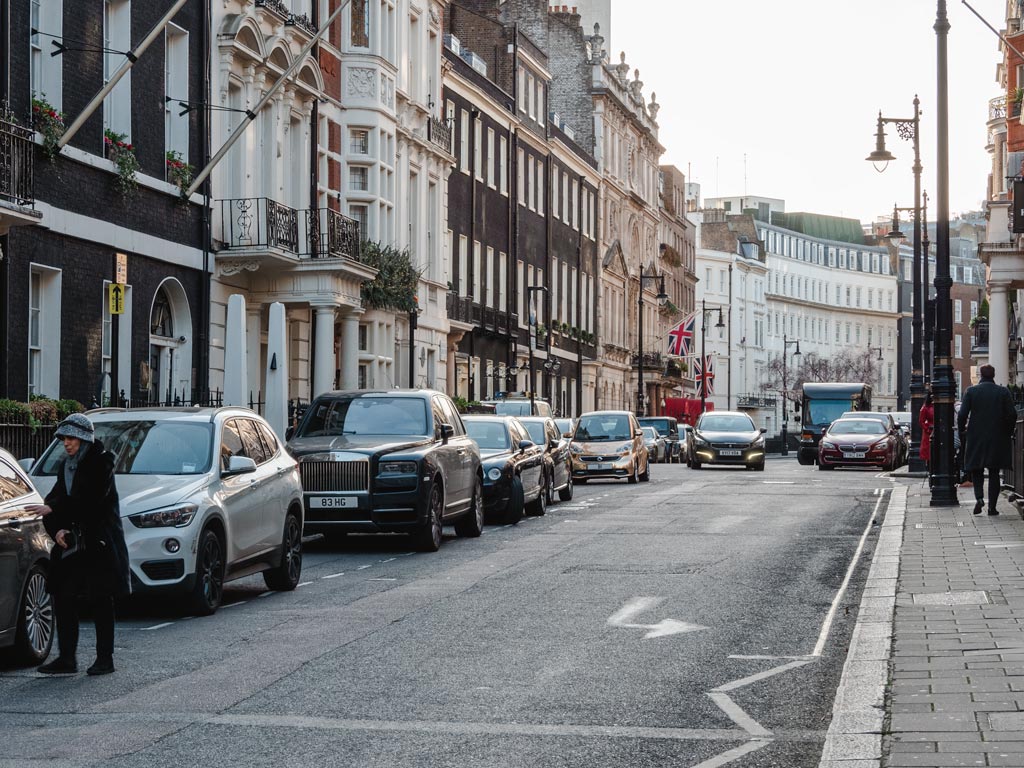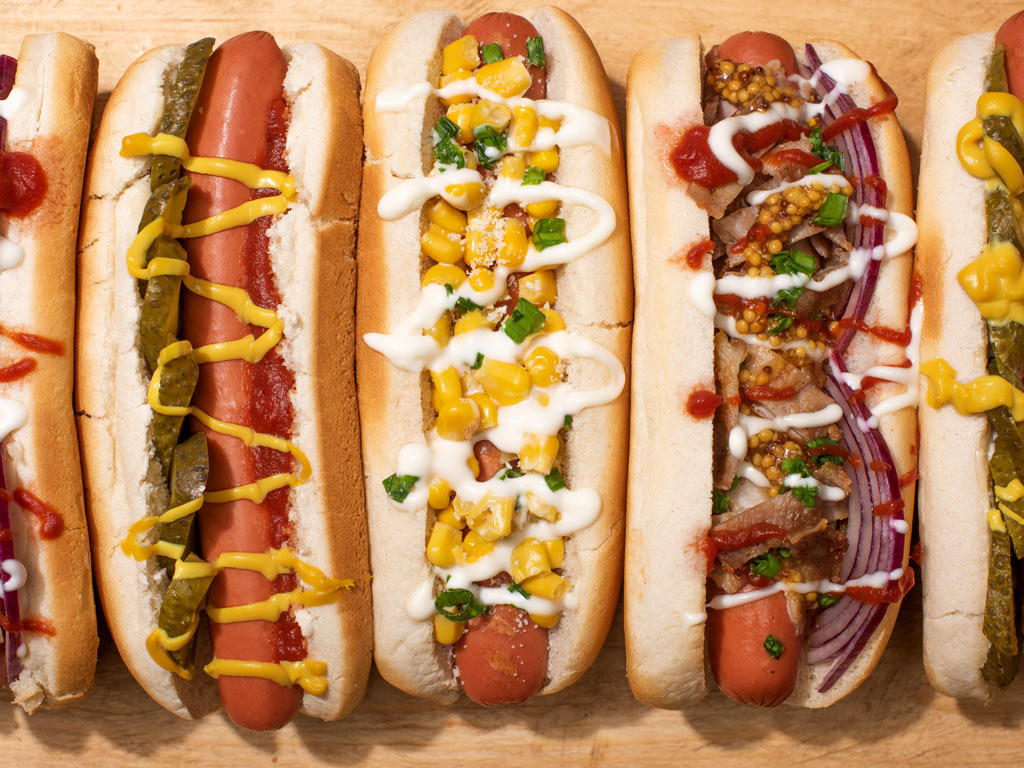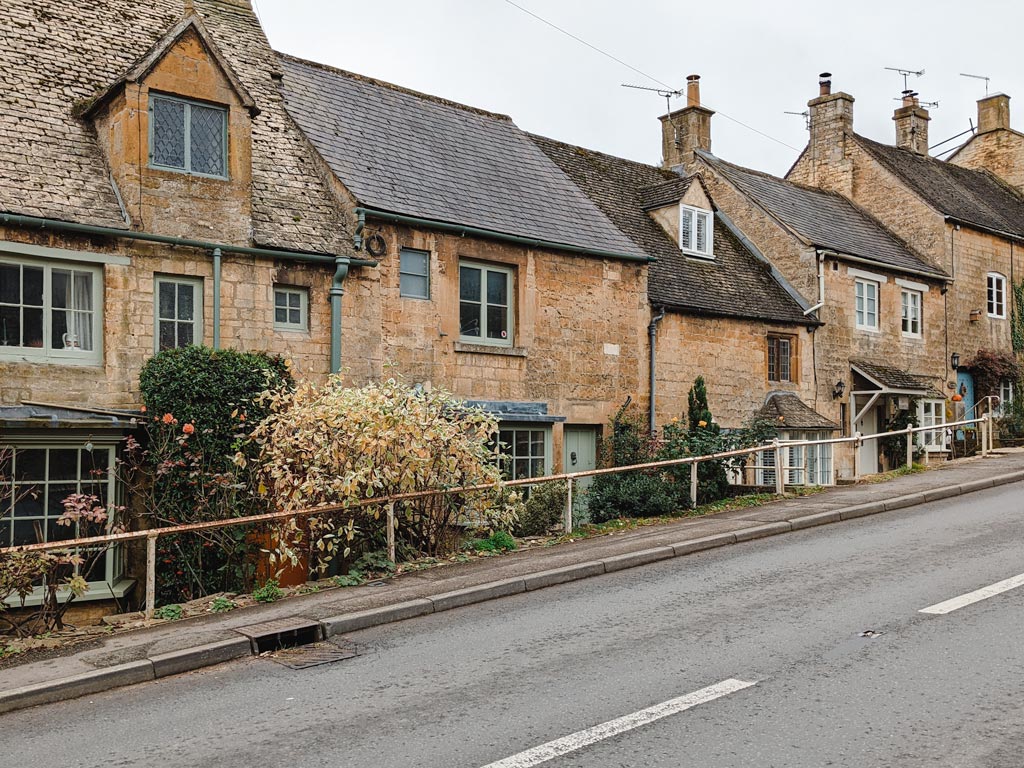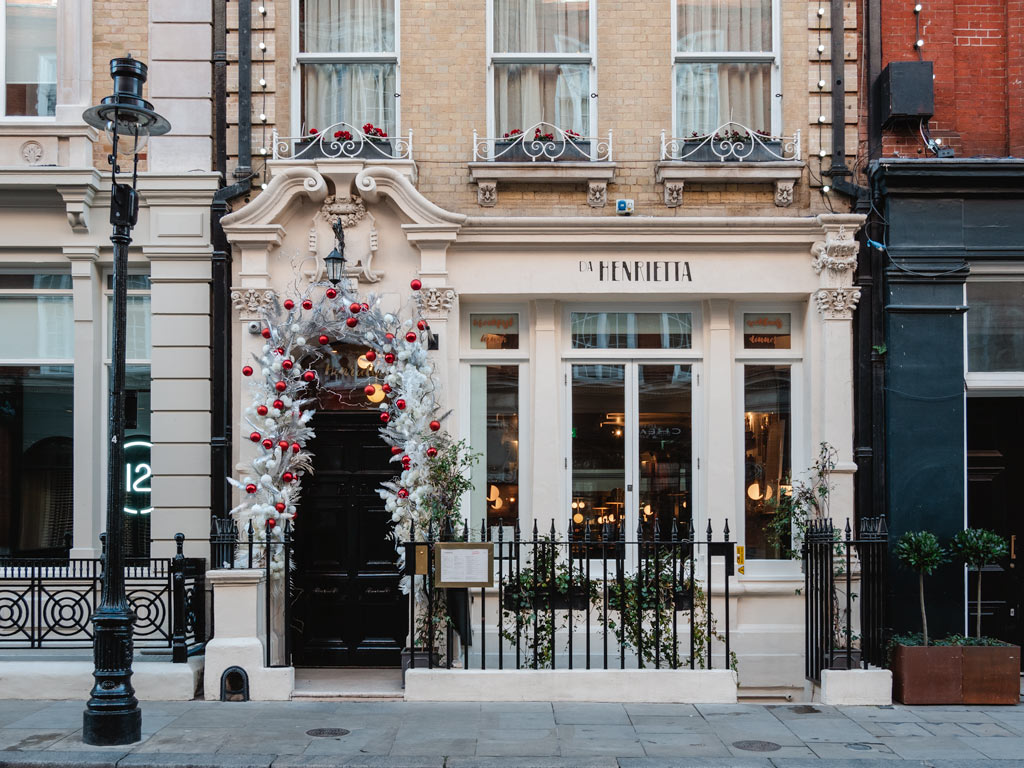If you scroll through any forum or Facebook group for US expats in Britain, I guarantee the most discussed topic will be things Americans miss while living in the UK. While you’ll find the usual suspects–like adjusting to driving on the left–there are some American things not in the UK that may surprise you.

This post contains affiliate links. As an Amazon Associate, I earn from qualifying purchases. For more information, click here.
I’ve written a more detailed post about big differences between living in the US vs UK, but it’s the little missing things that fan the flames of homesickness.
The absence of coffee creamer. The limited fall decor. The ease of finding well-fitting shoes…
This topic always surfaces close to the holidays, when we most keenly feel the absence of family, comfort foods, and all the things that remind us of home. While I’ve learned to live without my weekend breakfast tacos and midnight trips to Walgreens, I find myself pining after them most in early winter.
Here are some common things Americans miss while living in the UK.
Iced drinks
After four years of reading through complaints from Americans living in England, the number one comment I see is that cold drinks aren’t served with ice.
It might seem a strange concern to non-Americans, but after years of working in the restaurant industry, I know just how particular Americans can be about the amount of ice in their drinks.
Ice started out as a novelty in Victorian England, a luxury item for the wealthy. It soon became a passing fad that even refrigeration technology couldn’t revive.
The only time you can expect ice in your drink is if you’ve ordered a cocktail. Thankfully, ice cube trays are easy to find in home goods stores and bigger supermarkets.
Dryers
For many British households, laundry day looks very different than it does in the US. In fact, there’s often not a laundry “day” at all, because you can’t wash and dry five loads on a Sunday without a dryer.
Dryers are a major thing Americans miss living in the UK. While about 80% of US households own a dryer, only around 50% of UK households have them. And these are concentrated in family homes where there’s more space (and children creating a constant stream of dirty clothes).
So how do the other 50% of UK households dry their clothes?
In the warmer months, you hang them outside–though you’ll need to keep an eye on the sky in case an errant rain shower undoes your work. In the colder months, Brits use foldable drying racks and even drape things over radiators (though I don’t endorse the latter method).
A/C
Historically, British summers have been generally mild, with high temperatures around 75°F/24°C. Thus, the vast majority of UK homes don’t have A/C (known here as aircon).
Unfortunately, every summer since 2018 has come with multiple heatwaves and 90°F+ degree days. The first year my parents came to visit us in London was during one of these week-long heatwaves, and they vowed to never return in summer again.
If you don’t want to suffer through the hot summer weather, invest in a portable air conditioner. Or make like the Brits and escape to the coast.
Automatic cars

If you were nervous about driving down narrow roads on the left side, just wait until you have to do it in a manual transmission car!
90% of driving tests in the UK are passed in manual cars. In fact, if you pass your driver’s test in an automatic, you get an automatic-only license vs a normal license granted to people who pass in a manual vehicle.
Culturally, Brits tend to view automatic cars as lower performing and for people who don’t really know how to drive (like training wheels on a bicycle). Also, manual cars are cheaper than automatics.
However, things are changing. In the past few years, new automatic car sales have surpassed new manual sales. Perhaps in another decade or so, we can strike this item off the list of American things that are hard to find in the UK.
Coffee creamer
Interestingly enough, coffee creamer is one of the most common things Americans miss while living in the UK.
If you like to splash a bit of flavored Coffee Mate into your morning coffee, I’m afraid you’ll have to give it up or pay 2-3 times the US price to get it from places that sell American foods.
Creamer is a distinctly American product, so it’s no surprise you won’t find it in the UK. Here, we add milk to our coffee.
If you’re desperate for that creamy texture, you could use single cream, which is a richer version of whole milk with about 18% fat content. But if you’re ordering coffee from a cafe, you’ll typically be offered semi-skimmed (2%) or whole milk.
Lemonade
“Lemonade” is one of those words that mean different things in British vs American English.
In America, lemonade is a still drink made from lemon juice, water, and sugar.
In the UK, lemonade is a carbonated lemon drink that tastes more like Sprite than Country Time. In fact, if you ask for lemonade at a British restaurant, they’ll probably bring you a Sprite or 7-UP.
Depending on where you live, you may be able to find American-style lemonade in the supermarket. Just look for “still lemonade” in the juice section.
Imperial system
Four years after moving to the UK, I still haven’t adapted to the metric system.
Sure, I know that there’s 250ml in a cup and that 20C is t-shirt weather. But when someone tells me they weigh 70kg and they’re 171cm, I just smile and nod.
Plus, Brits don’t use the metric system exclusively.
They measure short distances in miles and long ones in kilometres. They measure beers in pints, which are bizarrely NOT the same size as American pints (20 fl.oz. in the UK vs 16 in the US)! And people calculate their weight not just in kilograms, but also in stones, which is roughly 14 pounds.
It doesn’t help that pounds are the name of the currency here, either…
Half sizes for shoes
I’ve made my peace with nearly all of these things Americans miss living in the UK. But the lack of half sizes for shoes is a hill I’m willing to die on.
As someone with 6.5 UK-size feet, it’s nearly impossible to find properly fitting shoes in British brands. It’s why I mainly wear American trainers year-round, when I’d really love to slip into a cute pair of Chelsea boots each autumn.
I’ve also found that–at least with women’s shoes–British shoes are more narrow than American ones. Even when I am lucky enough to locate a pair of 6.5 size shoes, my toes are often squeezed together.
If you’re firmly a half-size in shoes, I recommend buying them in the US when you return for a visit.

Want more travel + relocation tips?
Become a member of my Patreon group for exclusive access to my resource library, including:
- Printable packing lists for moving + travel
- Money-saving tips
- Insider travel guides
- And much more
Prevalence of fast food

I didn’t realize just how prevalent fast food restaurants are in America until I moved to the UK. Even in rural areas of the US, you’re rarely far from a McDonalds, Burger King, or local chain.
While there’s no shortage of fast food restaurants in the UK, they aren’t nearly as ubiquitous, especially outside of larger towns and cities. And many chains are absent altogether, like In-N-Out Burger.
However, that’s starting to change, with franchises like Wendy’s and Popeye’s starting to expand across the pond.
On a related note, the UK fast food menus don’t always have the same items as their American counterparts. For example, British KFC’s don’t sell biscuits, and the “tortilla chips” you get at UK Taco Bell are more akin to Doritos.
RELATED: 24 Pros and Cons of Living in London
Road trips
One of the very first trips we took in the UK was a London to Scotland road trip with my in-laws. It was a blast, but it also revealed a lot about why Brits don’t take nearly as many road trips as Americans.
First of all, it takes a lot longer to drive from place to place in the UK vs the US.
Unlike the well-connected interstates and freeways in the US, there aren’t nearly as many highways or even long roads in the UK. You’ll end up driving on a number of side roads to get from point A to B, and it can take 10 minutes to drive a single mile.
British roads are also more narrow than American ones.
Two-way streets are often not wide enough for two cars to pass side by side, so someone has to pull onto the shoulder to let the other pass. And if you’re on a country road with no shoulder, one of you has to reverse back down the road!
That being said, there are tons of bucket list-worthy places in the UK that you can only reach by car, so it’s worth getting behind the wheel to explore.
24/7 culture
This is more a US vs Europe thing, but it applies to the UK as well.
There are tons of gas stations, corner stores, pharmacies, and even grocery stores in the US that operate 24 hours a day, 7 days a week. Even in London, a major metropolis, there are very few places that are open 24/7.
And due to the UK’s Sunday Trading Laws, most stores can only open for six consecutive hours between 10am and 6pm. Many independently owned shops are outright closed on Sundays and sometimes Mondays, too.
The 24/7 culture goes beyond opening hours, though. It extends to how quickly businesses operate as well.
For example, when we moved to London from the US, we were shocked to learn that it takes weeks to get an internet connection turned on, even if all of the wiring is present. And when we moved house, it took over a month to get a food waste bin delivered.
When you consider how much better the work-life balance is here in the UK, though, it’s worth the trade-off.
Target
Target is unfortunately one of those American things not in the UK. One-stop-shops just aren’t as prevalent in Britain as they are in the US.
Sure, there are places like Tesco Extra that carry electronics and clothes in addition to grocery items. But even these mega-shops can’t match the sheer range of products you can find at a Super Target.
While the number of specialty shops is one of my favorite things about living in England, I do miss the ability to get a swimsuit, video game, ottoman, and frozen pizza all in one place.
Ease of seeing a doctor
As grateful as I am for the NHS, I’m glad I have private health insurance.
In the US, I could call my doctor’s office and get an appointment within 5 days. Depending on where you live in the UK, you may not be able to schedule an advanced GP appointment at all.
Some practices only offer same-day appointments, which means the phone lines are jammed for the first hour of the day and you have to call off of work last-minute. Recently, my GP’s phone system was on an endless loop of welcome message, press a number to choose an option, hold, and back to the welcome message.
To be fair, my previous GP was always easy to see and responded to tele-health calls within 24 hours, so your mileage may vary.
Getting an appointment with a specialist takes even longer. I had to wait about two months to see an NHS physio, and that was on the shorter end of wait times.
Still, nothing beats being able to walk out of the doctor’s office without stopping at the desk to pay the bill and sort out insurance cover!
Friendly customer service
I’m not one of those Americans who misses smiling and chatting with the checkout clerk at the grocery store. But it is jarring to go from the American “service with a smile” model to the quiet and occasionally brusque British style.
If you’ve moved to the UK from the southern US, you’ll probably find British customer service to be cold or even rude (especially in London). Just remember that it’s a cultural difference, not a personal thing.
Interacting with strangers
In general, British people don’t greet people on the street or smile at strangers like Americans do. In fact, it’s an unwritten rule that you never acknowledge your fellow commuters on the train, lest you obligate yourself to greet them every day in the future.
Just like the US, this varies by region. Though in the UK’s case, it’s the south that’s typically more reserved and the north that’s more open and friendly.
Window screens
When it comes to housing, window screens are one of the biggest things Americans miss when living in the UK. Window screens aren’t really a thing anywhere in Europe, actually.
It’s partially a cultural thing–Europeans shoo the bugs out or put up with them until they leave (flies show themselves out pretty quickly in my experience). And it’s also because many homes here were built before window screens became popular.
If you’re really worried about bugs getting in your home, however, you can buy “fly screens” that come in aluminum frames or attach with velcro.
Detached houses

If you thought your days of hearing your neighbors through the walls were over, think again. While most American homes are detached, about 80% of UK homes share one or more walls with neighboring houses.
Growing up in the US, it was hard to adjust to the closeness of UK homes. Having your front door a few feet away from your neighbor’s door feels weirdly close. And I’m always conscious of how much noise is coming from the TV or sound system, which is something I never worried about in our detached US house.
How well you can hear your neighbors depends on the house (and the people living there). We could hear faint conversation and TV sounds every day in our last place. But our current rental is semi-detached with “halls adjoining”, so the main living spaces are set apart from each other and we rarely hear a sound.
Buying in bulk
UK homes aren’t just connected to each other–they’re also smaller than the average US single family home. That means less space to store 24-count jumbo toilet paper rolls and big boxes of pantry staples.
While pantries are becoming popular additions in new-build UK homes, the vast majority of existing homes don’t have a kitchen closet full of non-perishable food. Even if you’re lucky enough to live near one of the UK’s 29 Costco locations, you probably won’t have the space to store everything.
Also, fridges here are generally smaller than in the US. It’s part of why Brits grocery shop multiple times a week compared to once weekly or bi-weekly US trips.
Mexican food
Whether you live in Manchester or the Scottish highlands, finding good Mexican food in the UK is nearly impossible.
Aside from a few hidden gems in Edinburgh and London, it’s a major struggle to get authentic tacos, enchiladas, or even salsa here. The flavors are often mild and slightly off, which just makes me long for the real deal even more.
Even the Old El Paso products they sell in British supermarkets taste different.
As someone who lived in Texas for several years, this is probably the thing Americans miss while living in the UK I relate to the most.
American football
Sorry American football fans–gone are the days of going to the sports bar, eating wings, and watching your favorite team play. After four years, my husband still isn’t used to not having football on TV all Sunday long.
However, there’s some good news for people who want to watch American football games in the UK.
Sky TV’s NOW app lets you live stream many (not all) NFL regular season games for about £34/month. Sadly there’s no option to watch replays, so you’ll need to stay up late to catch night games.
And if you want to watch college football games, you’re in luck. You can watch quite a few NCAA games with a cheap subscription to ESPN Player. You can also watch replays of games, which is perfect for those late-night games that happen at 1am GMT.
Seasonal flavors

Last time I visited my family in the US, I came across a pack of pumpkin spice yogurt at the grocery store. As much as I love autumn flavors and the ubiquitous PSL, this combination felt absurd.
And yet, I stood by and watched two different people delightedly pick up that yogurt and place it in their carts. It was peak America.
While the Brits go all-out for Christmas, from turkey and stuffing sandwiches to gingerbread lattes, the rest of the seasons’ flavors are rather neglected compared to the US.
Holiday TV specials
Do your holiday traditions involve watching Rudolph the Red Nosed Reindeer, A Year Without a Santa Claus, and Frosty the Snowman on TV?
I grew up with these American TV specials, and I was devastated to learn most weren’t available for rent or purchase in the UK. It’s a small thing, but as I said before, you feel these absences keenly during the holiday season.
Luckily, I was able to get all of the Charlie Brown holiday specials on Amazon Prime, and I bought The Grinch years ago on the Apple store, so all is not lost.
The sun
It’s a myth that it’s always raining in the UK. But overcast skies are very much the norm here.
Even in southern England, which has the most sunny hours in the UK, you can have entire weeks of mostly grey days, especially in the winter. A totally sunny day is a rare and cherished thing, bringing people out to their local parks and commons in droves.
Americans moving to the UK from sunny states like California or Texas will struggle, and frankly may never adjust. I know of several people who ended up moving back to the US or another country entirely because they couldn’t bear the grey skies here.
What other American things do you miss living in the UK? Let me know in the comments!


So glad I found your blog! I was born and raised in Texas (just spent the last 10 years in the PNW) but have always wanted to move to the UK. Not sure it will ever happen but love reading all of these lists and your experiences 🙂
Spot on on all accounts